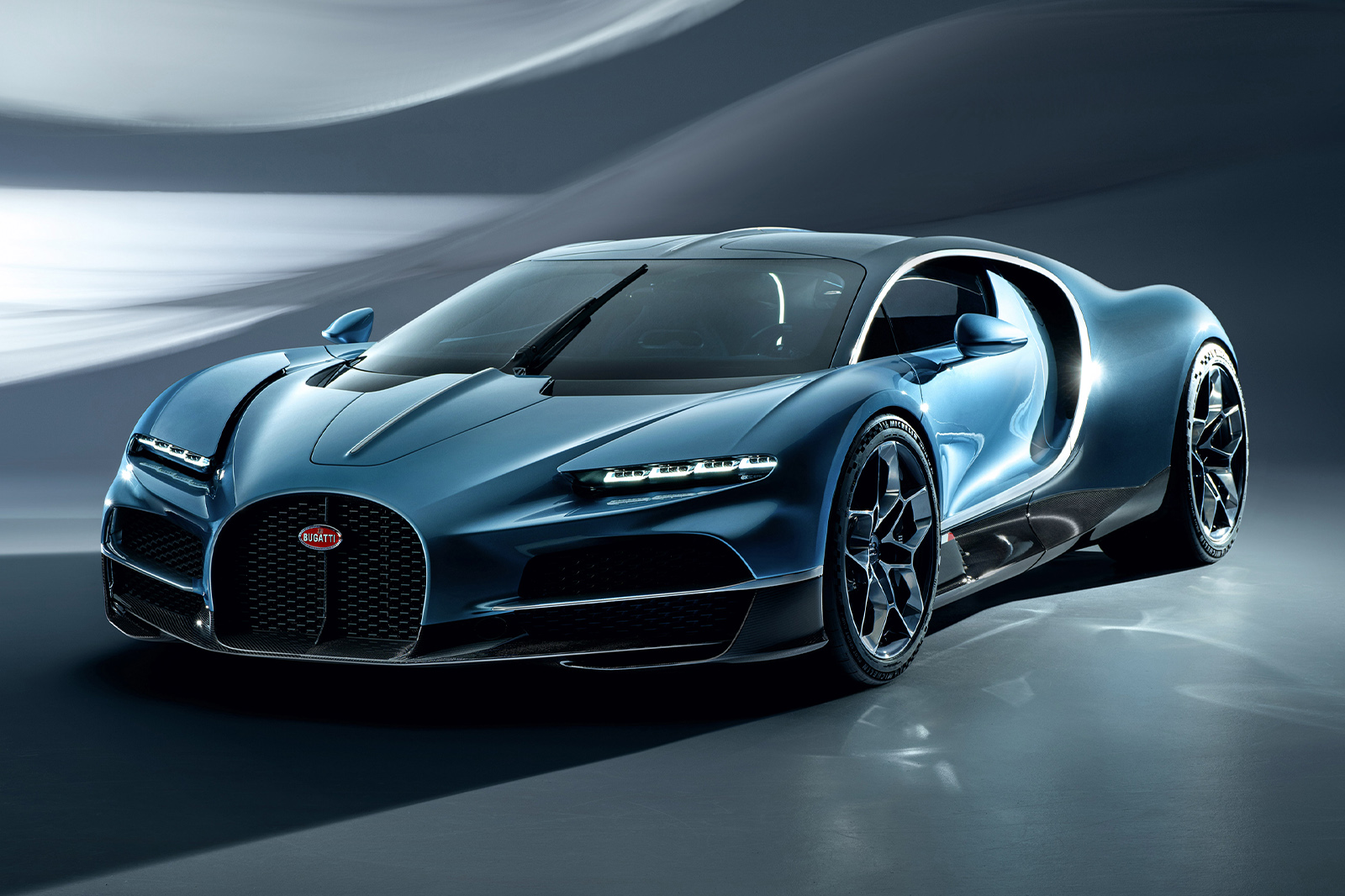“We wanted to have it very emotional. It has to feel special, because ‘if it is comparable, it is no longer Bugatti’,” he added, referencing the slogan of company founder Ettore Bugatti.
Powertrain
The Tourbillon takes an appropriately outlandish approach to electrification, dropping the behemoth W16 motor which powered the Chiron and Veyron for a 1775bhp plug-in hybrid arrangement centred around a screaming naturally aspirated V16 in the middle.
That engine – the first of this format to power a road car since 1991’s ultra-rare Cizeta-Moroder V16T – was engineered in collaboration with Cosworth following the decision not to hybridise the W16 or develop a pure-electric Bugatti model.
CEO Mate Rimac said recently he sees “no reason” for Bugatti to go electric in the immediate future, given its low volumes and the low mileages of its cars. “We have developed a new V16 engine, and we want to use that engine for a while, and maybe some other engines,” he said, “and I can’t see a reason why it would be impossible.”
The Tourbillon’s 8.3-litre engine is massive, measuring around a metre end-to-end, but weighs just 252kg, thanks to liberal use of lightweight metals and composites.
It produces 986bhp in its own right, which makes it one of the most potent combustion engines yet installed in a road-going car, but with a trio of Rimac-supplied electric motors – two on the front axle and one at the rear – supplying an extra 789bhp, the Tourbillon becomes comfortably the most powerful combustion car on the market. Only the likes of the pure-electric Rimac Nevera, Lotus Evija and Pininfarina Battista pack more power, and then only around 100bhp.

